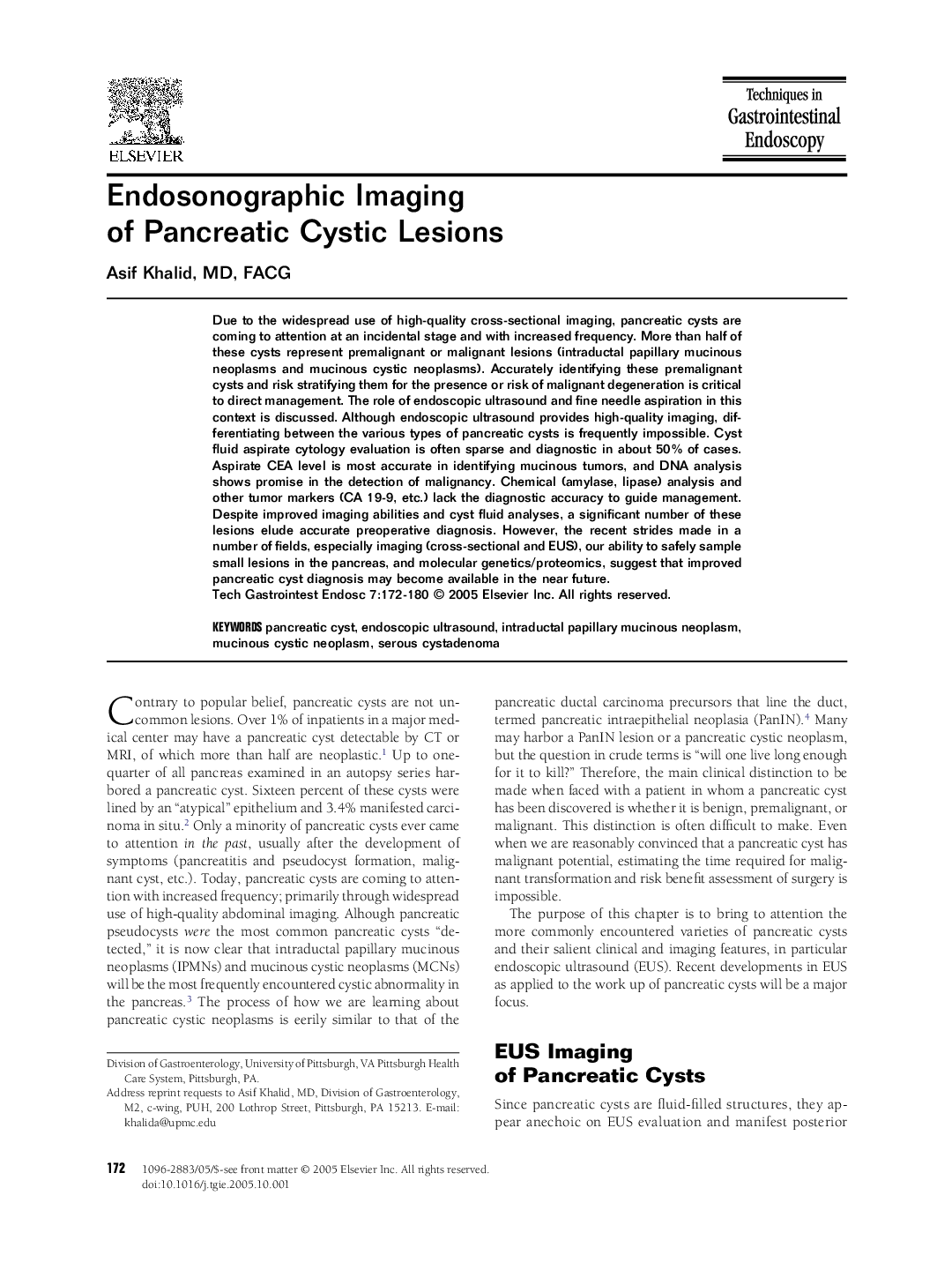| Article ID | Journal | Published Year | Pages | File Type |
|---|---|---|---|---|
| 9256894 | Techniques in Gastrointestinal Endoscopy | 2005 | 9 Pages |
Abstract
Due to the widespread use of high-quality cross-sectional imaging, pancreatic cysts are coming to attention at an incidental stage and with increased frequency. More than half of these cysts represent premalignant or malignant lesions (intraductal papillary mucinous neoplasms and mucinous cystic neoplasms). Accurately identifying these premalignant cysts and risk stratifying them for the presence or risk of malignant degeneration is critical to direct management. The role of endoscopic ultrasound and fine needle aspiration in this context is discussed. Although endoscopic ultrasound provides high-quality imaging, differentiating between the various types of pancreatic cysts is frequently impossible. Cyst fluid aspirate cytology evaluation is often sparse and diagnostic in about 50% of cases. Aspirate CEA level is most accurate in identifying mucinous tumors, and DNA analysis shows promise in the detection of malignancy. Chemical (amylase, lipase) analysis and other tumor markers (CA 19-9, etc.) lack the diagnostic accuracy to guide management. Despite improved imaging abilities and cyst fluid analyses, a significant number of these lesions elude accurate preoperative diagnosis. However, the recent strides made in a number of fields, especially imaging (cross-sectional and EUS), our ability to safely sample small lesions in the pancreas, and molecular genetics/proteomics, suggest that improved pancreatic cyst diagnosis may become available in the near future.
Keywords
Related Topics
Health Sciences
Medicine and Dentistry
Gastroenterology
Authors
Asif (FACG),
